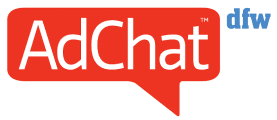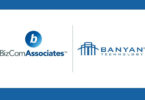Watch Connie’s video explaining personal branding best practices.
In Part 1 of this series we addressed the importance of developing personal branding. Here are my recommendations for how to do it:
LinkedIn: I used to recommend starting with a personal website because you can customize it according to your personality/professional image, and be able to include as many documents, images, and videos as is appropriate. Now, you can accomplish most of what you would on a personal website on LinkedIn. You’re published? List executive summaries of each publication along with a link or PDF to the full document. You’ve spoken at academic or industry conferences or events? Post video clips along with links to your YouTube page. You have an impressive CV or resume? List the highlights with access to the complete document. You’re an expert in your field? Write a blog and include the link. You’re on the go and in the know? Check the box to post simultaneously to your twitter feed.
If you don’t use any other social media site, be Consistent, Comprehensive, and Concise on LinkedIn. Make sure your profile is 100% complete. Be current (another C). Every time there is an update in your career, update your profile. Endorse your Connections. Thank those that endorse you. Be active in a discussion group (even if it’s just one). My primary lesson when it comes to social media is to treat it as a sharing of information. You want to be collaborative, not the only one talking. Share news and events that involve your industry. Share posts from your colleagues and your competitors. Ask as many questions as you answer.

Twitter is a very efficient way of seeing what the people, news, and organizations you are most interested in are doing, saying, and sharing. You can also stay current about what’s happening in your space. And by using the Retweet feature, you can quickly share news and information; in other words, it’s very easy to actively participate in conversations here. And when it comes to posting it forces you to practice the third C—concise.
Facebook seems to generate the most anxiety among professional women in particular. This original “social” media platform is primarily that— I’ve heard Linkedin referred to as the Boardroom and Facebook as the Playground. But it’s murky. Because if you are a brand, and you fiercely protect that brand, Facebook is risky. On Linkedin you very carefully choose who you invite to connect, and you very carefully decide whose invitation you’ll accept based on how they fit into and participate in your professional space. Your network is a reflection on you. Facebook isn’t professional; it’s not supposed to be. Even if you are conscious of what you post, your “friends” may not be. There are some advantages: If you publish a book, launch a new consumer product, or need to get support for a cause, as a few examples, you have a whole other set of connections that can help spread the news to their networks. But that is also dependent on you having a few hundred “friends” to begin with. I’m afraid for professional women it has become more trouble to manage than it’s worth. You can do without it.
If you are a speaker, teacher, or trainer, YouTube is a great place to aggregate your video clips. While you should certainly post a good representation of clips on your website or Linkedin, include an invitation and link to subscribe to your YouTube channel. Subscribers will then be notified every time you post a new clip.
Once you select the platform or platforms to be on, it can seem overwhelming managing it all. There are tools which help you to be efficient about it, such as the popular HootSuite, which allows you to make one post and have it appear across all of your platforms. There has also been a lot of conversation about whether it’s appropriate to have a ghostwriter to write your blogs and manage your social media. I believe it is perfectly fine; I make my living managing digital brands. You can participate as little or often as you’d like, but it takes pressure off of investing the time in order to keep it Consistent and Comprehensive.
How do you sustain yourself in business? Whether you are on a solid career path, or you are in transition, or even unemployed, invest in yourself. Take advantage of training classes or continuing education in your present or new field; stay true to your personal values; continue contributing to your community. And most importantly, evolve your brand, own it, and fiercely protect it. Things can change quickly as we’ve learned in recent years. But by staying true to these principles, you will be able to sustain yourself professionally, be better prepared to rebound in the event of a voluntary or involuntary change, and be confident entering into new opportunities.










